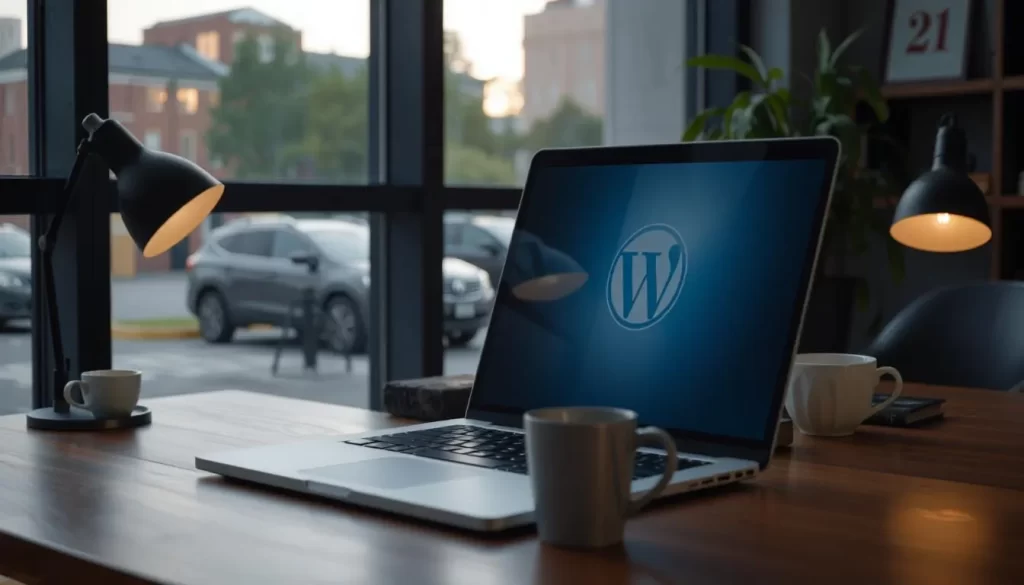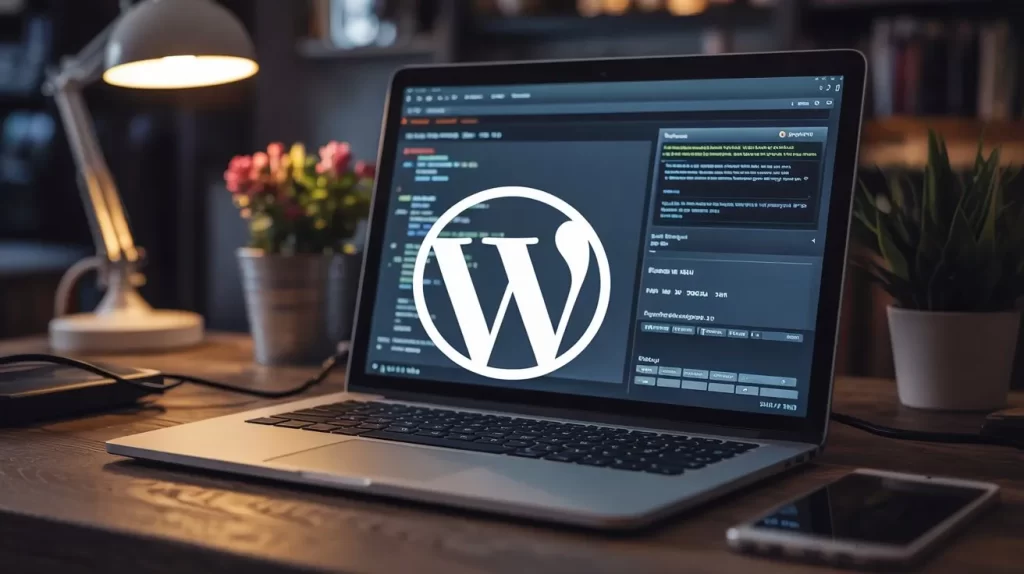The Causes of WordPress Website Downtime
Every website owner has experienced it at some point: WordPress website downtime. It can be a nightmare, especially if your website is vital for your business or personal brand. Website downtime refers to periods when your site is offline or not functioning properly, which can cause loss of visitors, revenue, and credibility.
Understanding why downtime happens and how to fix it is crucial for WordPress site owners. Downtime can occur for a variety of reasons, from hosting issues to software bugs or server misconfigurations. The key to preventing prolonged downtime lies in quickly identifying the cause, taking appropriate steps to resolve it, and implementing measures to reduce the risk of future disruptions. In this article, we’ll explore common reasons for downtime, how to troubleshoot issues, and what you can do to maintain a reliable WordPress site.

Common Reasons for Downtime
WordPress website downtime can be caused by several factors, many of which are preventable. Knowing the typical culprits is the first step toward resolving and preventing downtime. Let’s look at the most common causes:
Hosting Issues
One of the most frequent reasons for WordPress downtime is problems with the hosting provider. Issues like server overload, server outages, or even shared hosting restrictions can lead to your website going down. If your site shares a server with hundreds of other websites, the server can become slow or crash, causing your site to be temporarily inaccessible.
Server Problems
Even if your hosting is working perfectly, server problems can still occur. These can include misconfigured server settings, hardware failure, or issues related to the server software. When this happens, your website may not load properly or may be completely offline until the server issue is resolved.
Software Bugs and Compatibility Issues
WordPress is built on a variety of software components, including the WordPress core, themes, and plugins. If any of these elements are outdated or incompatible, it can cause your website to break or experience downtime. For example, an outdated plugin may conflict with the WordPress core, causing errors or making your site inaccessible.
DDoS Attacks and Security Vulnerabilities
Distributed Denial of Service (DDoS) attacks are another common cause of downtime, especially for larger websites. These attacks flood your server with a massive amount of traffic, making it unable to process legitimate requests. In addition, security breaches or hacks that target your server or WordPress installation can also lead to downtime.

How to Fix WordPress Downtime Issues
Once you’ve identified the cause of your downtime, the next step is to take action and restore your website to its fully functional state. Below are the steps you can take to fix common WordPress downtime issues:
Checking Server Status and Hosting Issues
If you suspect hosting issues are causing downtime, the first step is to check your hosting provider’s status. Most hosting companies provide a status page or dashboard where you can check if they are experiencing any widespread server outages or maintenance issues.
If the issue is with the server itself, it’s important to contact your hosting provider’s support team immediately. Many providers offer live chat or phone support, so you can get real-time assistance in fixing the issue.
Additionally, check if your server resources (like CPU or RAM usage) are being fully utilized. Overloading your server can cause downtime. If your site receives high traffic or has large files, you might need to upgrade your hosting plan to handle the increased demand.
Deactivating Plugins to Resolve Conflicts
If you suspect that a plugin is causing downtime or errors, the best course of action is to deactivate all plugins temporarily. You can do this via the WordPress dashboard if your site is still accessible. If the site is down entirely, you can deactivate plugins by renaming the plugin folder via FTP or your hosting file manager.
After deactivating all plugins, check if your site returns to normal. If the issue is resolved, reactivate plugins one by one to identify the culprit. It’s common for plugin conflicts to cause downtime, especially if the plugin is outdated or incompatible with your current version of WordPress.
Restoring from a Backup if Necessary
If you are unable to resolve the issue and your site is still down, restoring your WordPress website from a backup is a reliable solution. If you have a recent backup, you can restore it via your hosting control panel or a plugin like UpdraftPlus or BackupBuddy.
It’s important to note that backups are essential for preventing downtime in the first place. If your site is regularly backed up, you can quickly revert to a previous version without losing significant data or having prolonged downtime.
How to Prevent Future Downtime
While you can’t always predict when downtime will occur, there are several steps you can take to reduce the risk of future disruptions and ensure your WordPress site stays reliable:
Use Reliable Hosting
Choosing a high-quality hosting provider is crucial for minimizing downtime. Opt for a hosting provider with a solid track record, high uptime guarantees (ideally 99.9% or higher), and good customer support. Managed WordPress hosting services, such as those offered by WP Engine or Kinsta, are specifically optimized for WordPress sites and provide additional security and performance features.
Regular Maintenance and Updates
Regularly updating your WordPress core, themes, and plugins is essential to ensuring that everything runs smoothly. Outdated software can cause compatibility issues and security vulnerabilities that may lead to downtime. Always update to the latest versions of your software and plugins to avoid any risks.
In addition to updates, perform regular maintenance tasks like clearing your website’s cache, optimizing your database, and checking for broken links or other issues.
Monitor Uptime and Performance
One of the best ways to prevent unexpected downtime is to monitor your site’s uptime and performance. Use uptime monitoring tools like Pingdom, Uptime Robot, or GTMetrix to receive real-time notifications if your site goes down. These tools will alert you to problems before they escalate, allowing you to fix issues faster and minimize downtime. In addition, regularly check your website’s loading speed and server response time. Slow performance can be a sign of potential issues that could lead to downtime in the future.
Ensuring Website Reliability with Regular Checks
WordPress website downtime can happen for many reasons, but the key is to act quickly to resolve the issue and ensure that your site is protected from future disruptions. Regular monitoring, updates, and maintenance will go a long way in ensuring that your WordPress site remains reliable and always accessible to your visitors.
By understanding the common causes of downtime and following the steps to fix and prevent it, you can maintain a stable WordPress site that provides a seamless experience for both you and your users. Remember, proactive care is always better than reactive fixes, so keep your website updated, monitor its performance, and invest in reliable hosting.
Frequently Asked Questions
What is WordPress website downtime?
WordPress website downtime refers to periods when your site is offline or not functioning properly. This could be due to server issues, hosting problems, or software bugs.
What causes WordPress website downtime?
Common causes of downtime include hosting issues, server problems, plugin conflicts, outdated software, or security vulnerabilities like DDoS attacks.
How do I fix WordPress downtime?
To fix downtime, you should check for hosting issues, deactivate conflicting plugins, and restore your website from a backup if necessary. Contact your hosting provider if the issue is server-related.
How can I prevent future WordPress downtime?
Use reliable hosting, perform regular updates, monitor uptime and performance, and maintain frequent backups to prevent future downtime.
Key Takeaways
- WordPress downtime can be caused by various factors, including hosting problems, plugin conflicts, and server issues.
- To resolve downtime, check for server outages, deactivate plugins, and restore from a backup.
- Proactive steps like regular updates, uptime monitoring, and using reliable hosting can help prevent future downtime.
- Keep your WordPress site secure and maintain regular backups to minimize the impact of any potential downtime.
